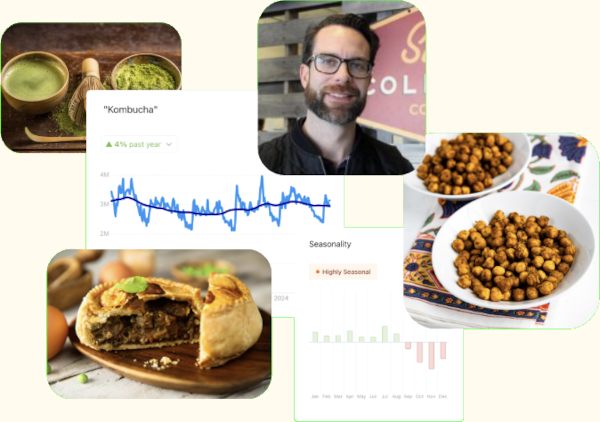Category Analysis - Dried Fruits

Overview of the Dried Fruits Industry
The dried fruits industry represents a unique confluence of nature's bounty and human ingenuity, where simple fruits are transformed into nutritious snack options with extended shelf lives. This market encompasses a diverse range of products including raisins, apricots, figs, dates, and prunes, each contributing to a sector that has seen remarkable growth over the last decade.
Globally, the dried fruits market is estimated to reach approximately $10.74 billion by 2025, growing at a CAGR of around 6.3%. This growth is fuelled by increasing consumer interest in healthy snacking options and rising demand for natural preservatives. In this context, dried fruits often serve as an appealing alternative to junk food, being rich in nutrients and fibre.
Key Players and Major Producers
The landscape of the dried fruits industry is dotted with both global giants and smaller niche players. Notable among them is Sun-Maid Growers, a stalwart in the raisin market. Furthermore, brands like Ocean Spray, known for their dried cranberries, and California Dried Fruit, which is at the forefront of innovative dried fruit solutions, have carved significant niches.
Other major players include Mariani Packing Company and Diamonds of California, both renowned for their quality offerings. These companies invest substantially in marketing to elevate awareness of dried fruits as essential dietary components, thereby boosting sales in a competitive marketplace. For more details on these companies, visit Sun-Maid, Ocean Spray, and Mariani Packing Company.
Recent Trends and Changes
In recent years, the dried fruits industry has embraced several notable trends. The advent of health consciousness among consumers has been a game changer, leading to a marked increase in demand for organic dried fruits. Subsequently, retailers are adjusting their stock to provide organic options, ensuring they cater to this health-oriented customer base.
Moreover, product innovation has become a mainstay strategy within the industry. Companies are increasingly diversifying their product ranges by offering exotic dried fruits and combining dried fruits with nuts, thus creating healthier snack mixes. For instance, mixtures of dried fruits with dark chocolate or yoghurt coatings have gained popularity, appealing to both health-conscious consumers and those seeking indulgent treats.
Economic Factors Shaping the Industry
The dried fruits industry is intricately linked to the agricultural sector, and fluctuations in crop yield directly impact market dynamics. Recent years have seen climatic changes affecting fruit production, with droughts and excessive rainfall disrupting traditional growing regions. Such conditions can lead to supply chain challenges that result in price volatility.
However, the overall financial outlook remains positive, buoyed by the rising demand for healthy snacks and convenience foods. Retail outlets are expanding their dried fruit segments, which has precipitated a growth in premium pricing strategies, where quality and origin become critical factors in consumers' purchasing decisions.
Challenges Within the Industry
Despite its buoyancy, the dried fruits industry grapples with several challenges. One such challenge is the increasing competition from alternative snack products, such as nuts and seeds, which are often viewed as equally healthy but perceived to offer superior nutritional profiles.
Moreover, the dried fruits sector faces scrutiny regarding sustainability practices, as some production methods can be resource-intensive. Companies are now striving to cultivate ethical practices—beyond mere compliance—by promoting eco-friendly farming methods and reducing waste across their supply chains.
Consumer Preferences and Market Segmentation
Consumer preferences are rapidly evolving, and understanding these shifts is paramount for firms operating in the dried fruit space. Millennials and Gen Z, characterised by their desire for sustainability and transparency in sourcing, have become key consumer segments. These demographics gravitate toward brands that align with their values, prompting companies to enhance their marketing narratives.
Additionally, the trend towards online shopping has transformed how dried fruits are marketed and sold. E-commerce platforms have gained traction, necessitating that brands boost their online visibility to capture this burgeoning consumer base. Reports indicate that the e-commerce space for food products is expected to grow by 20% annually in the coming years.
Innovations on the Horizon
The dried fruits industry is also set to experience transformation through innovations in packaging and preservation methods. With increasing focus on sustainability, companies are exploring biodegradable packaging alternatives, which resonate with environmentally conscious consumers.
Furthermore, industry leaders are investing in research and development to harness advanced technologies that enhance the quality and longevity of dried fruit products. Innovations such as freeze-drying and vacuum dehydration promise to preserve the flavours and nutrients of fruits while extending their shelf lives, thereby catering to the growing global demand.
Future Outlook of the Dried Fruits Industry
Looking ahead, the dried fruits industry appears poised for fruitful expansion. As wellness trends continue to dominate consumer mindsets, the appeal of dried fruits as healthy snack alternatives will likely only intensify. Businesses that adeptly integrate sustainability into their operations will capture the attention of modern consumers, steering their brands towards success.
Nevertheless, industry participants must remain vigilant in navigating the challenges posed by variable crop production and rising competition. The promise of innovation and adaptability will set apart the leaders from the laggards in this thriving market landscape.
Example Products in this Category:
Brands in this Category:
| Name | Story | Brand Categories | |
|---|---|---|---|
| Name | Story | Brand Categories | |
| Elan | When Elan began in 2010, we saw people looking for organic, plant-based food options to support their health. Since then, our family-run business has continually worked to provide a diverse range of products, all with function at their core. We want to feed customers like we feed our family - with high-quality food! | Nuts,Dried Fruits,Seeds,Matcha |





